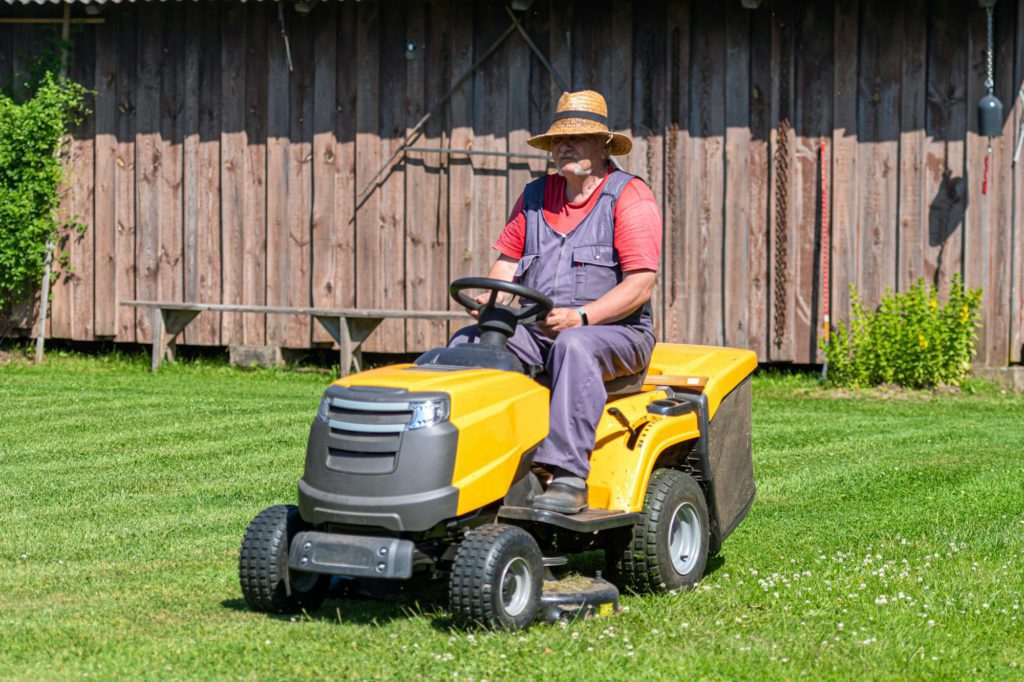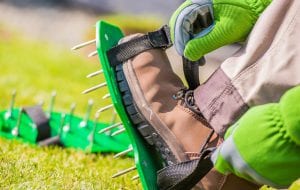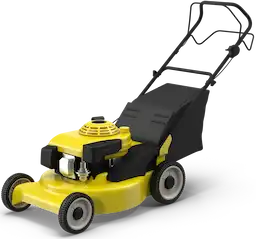Table of Contents
Things to Know Before You Mow
Although millions of people every year use lawn mowers, they do present dangers if not used correctly. Lawn mowers are safe to use when they are maintained and used properly. According to the U.S. Consumer Products Safety Commission, more than 60,000 people are treated in emergency rooms with lawn mower related injuries. We recommend staying diligent and remembering lawn mower safety protocols.
Walk-Behind Mower
Walk-behind mowers is a category of equipment that includes push, self-propelled, batter powered, electric, and reel mowers. It’s important to review your mower safety manual if you are unsure of how to operate the equipment or have not done so in a long while.

Mower Safety Tips
1. Keep all safety devices in place and working
This includes the discharge chute, trail shield, safety interlocks, etc. If any safety parts are damaged, replace them immediately. It’s important to remember that the mower safety features were installed for your safety and to reduce the risk of injury.
2. Disengage blade when not mowing
It’s important to disengage blades when not mowing. This includes crossing gravel or driveways and walkways. Disengaging the blades will actively avoid discharging material against a wall or obstruction. Material may ricochet, causing damage to yours or the customers property.
3. Clear the mowing area of foreign objects
Before starting work, check the lawn for any foreign objects that may be damaged or thrown by the blade. Thrown objects can cause personal injury or property damage.
4. Wear the proper footwear and clothing
Wear the right clothing and gear to protect yourself. Sturdy shoes with non-slip soles will prevent slipping and protect your feet from debris. Shirts and pants that cover the arms and legs will protect your skin from sun damage and debris while working.
5. Do not put hands or feet near or under the cutting deck of the mower
If the blade gets jammed or clogged, avoid putting your hands or feet near the blade. It’s better to use a stick or tool to clear the debris. Disengaged blades, while they’re not moving are still dangerous and can be very sharp.
It’s important to keep hands and feet clear from the deck while mowing as well. Contact with rotating blades can amputate fingers, hands, toes, and feet.
6. Know how to properly mow a slope
If the lawn has a slope, mow across the face of the slope, never up and down. Slopes are a major risk for slip and fall accidents. If the slope is greater than 15 degrees, avoid mowing it. It is safer to use a string trimmer or to consider a grass alternative in this area.
Riding Mower or Tractor
There are two types of riding lawn mower, a lawn tractor and a mower. A lawn tractor usually has a floating deck. This type will typically give a better quality of cut and is more comfortable to use as the deck will move a bit if you brush up against a tree. A riding lawn mower typically has a fixed deck, which is bolted directly to the frame. It’s important to read through the owner’s manual and familiarize yourself with the mower if unsure of how to operate it.

Mower Safety Tips
1. Identify stability and rollover hazards
Riding lawn mowers pose a larger risk of rollover accidents than walk-behind or zero-turn mowers. It’s important to be able to identify surfaces and terrains that can pose tip-over risks. These risks include wet surfaces, slopes, ledges, retaining walls, bodies of water, unprotected ditches, and culverts.
2. Never carry passengers
Riding mowers are one-person machines. This includes never carrying children passengers as well.
3. Avoid turning on a slope
Turning on a slope can increase the risk of a rollover and injury. It’s best to avoid turning on a slope unless absolutely necessary. A turn on a slope can be made by turning downhill slowly with the mower’s heavy end uphill.
4. Decrease speed when going down slopes or around corners
Any movements on slopes should be slow and gradual. Sudden changes in speed or direction can result in a rollover.
The Importance of Maintence
Properly maintaining your equipment is important for your safety and to prevent avoidable mechanical issues. Ideally, you should tune up your mower after every 25 hours of use or every three months, whichever comes first. A common maintenance to-do list includes changing the engine oil, changing the spark plug, cleaning the undercarriage, check fasteners and wheels, and sharpening the blade.
Following the recommended maintenance as directed, will keep your lawn mower in tip-top shape. Additionally, ensuring your blade is sharp will result in more efficient cutting and a better looking lawn. Dull blades create a ragged cut, turning the grass brown. You can view a quick guide on how to sharpen mower blades here.


Best Michigan Native Plants
Landscaping with native plants is beneficial to your local environment as well as your wallet. Since these plants have evolved to grow naturally in your area, they are able to

How and When to Plant Winter Rye Grass
To plant winter rye grass effectively, timing is essential. For northern regions, sow seeds from late August to early October, while southern areas should aim for late September to early

The Best Gutter Guards For Your Home [2024]
The best gutter guards of 2024 feature innovative designs and durable materials that effectively reduce debris accumulation and enhance gutter functionality. Top options include LeafFilter, known for its stainless steel

How Much Does a Yard of Mulch Cost in 2024?
In 2024, how much does mulch cost can vary considerably, influenced by the type, quality, and additional services. Natural mulch can cost between $15 and $65 per cubic yard, while

The Best Time to Plant Grass Seed on Your Lawn
The best time to plant grass seed depends on the type of grass and local climate. When you plant your grass, cool-season varieties should be seeded from mid-August to mid-September,

How Much Does Lawn Aeration Cost In 2024?
In 2024, lawn aeration costs generally range from $75 to $500. The final price is influenced by factors such as lawn size, soil type, and aeration technique. For example, core


